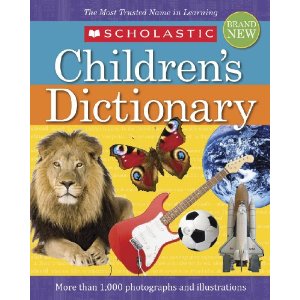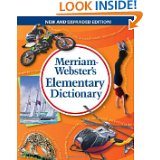 Sophie knows about all kinds of children’s books. She knows fiction, non-fiction (like science books and travel books), cookbooks (of course) and more. She’s a librarian after all. Pipper loves browsing through the library shelves with her. Recently, they were in the reference section where there were all kinds of encyclopedias and dictionaries. Sophie told Pipp that there is a plethora of research materials there. Pipper wasn’t sure what plethora meant, so they pulled a dictionary from the shelf to find out. Here are two fairly new dictionaries Sophie recommends with information about them from Amazon.com
Sophie knows about all kinds of children’s books. She knows fiction, non-fiction (like science books and travel books), cookbooks (of course) and more. She’s a librarian after all. Pipper loves browsing through the library shelves with her. Recently, they were in the reference section where there were all kinds of encyclopedias and dictionaries. Sophie told Pipp that there is a plethora of research materials there. Pipper wasn’t sure what plethora meant, so they pulled a dictionary from the shelf to find out. Here are two fairly new dictionaries Sophie recommends with information about them from Amazon.com
Scholastic Children’s Dictionary
Publication Date: July 1, 2010 | Age Level: 8 and up
The #1 choice in children’s dictionaries is brand new for 2010!
The bestselling Scholastic Children’s Dictionary is brand new for 2010! Some of the outstanding new features include: brand new cover and interior design, more than 1,000 all new photographs and illustrations, and double the current number of word histories and sample sentences. New entries and definitions have been written by prominent lexicographers and reviewed by an advisory board of educators and librarians. Bonus material includes a thesaurus and specially commissioned endpaper maps.
 Miriam Webster’s Elementary Dictionary
Miriam Webster’s Elementary Dictionary
Publication Date: January 2009 | ISBN-10: 0877796750 | ISBN-13: 978-0877796756 |
An all-new edition of the essential dictionary for children grades 3-5, ages 8-11, with more than 36,000 entries. Expanded usage sentences and phrases include over 1,300 quotes from classic and contemporary children’s literature. Additional features include hundreds of new, colorful illustrations, photographs, and diagrams: word history and synonym paragraphs; pronunciation paragraphs for each letter; child-friendly usage hints; and Greek and Latin word root paragraphs to aid spelling and vocabulary building. Special sections include geographical terms, signs and symbols, word roots, and a list of literary works used in the text.








